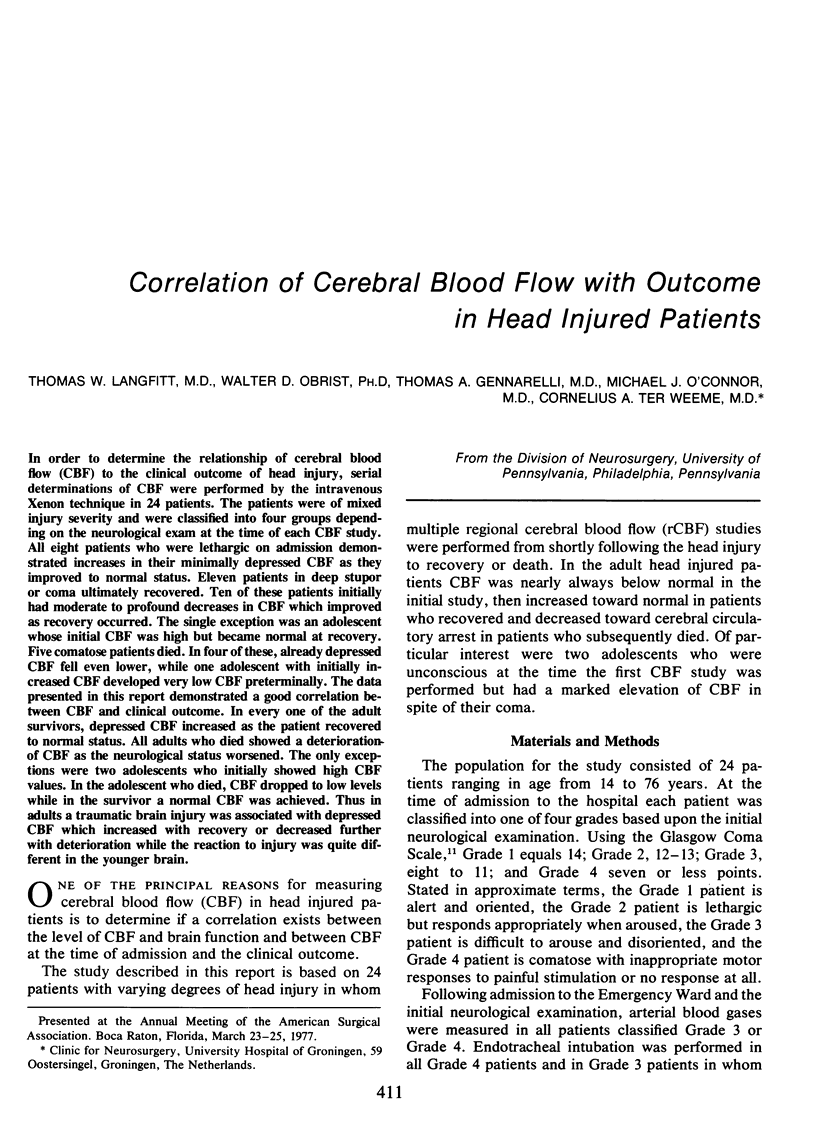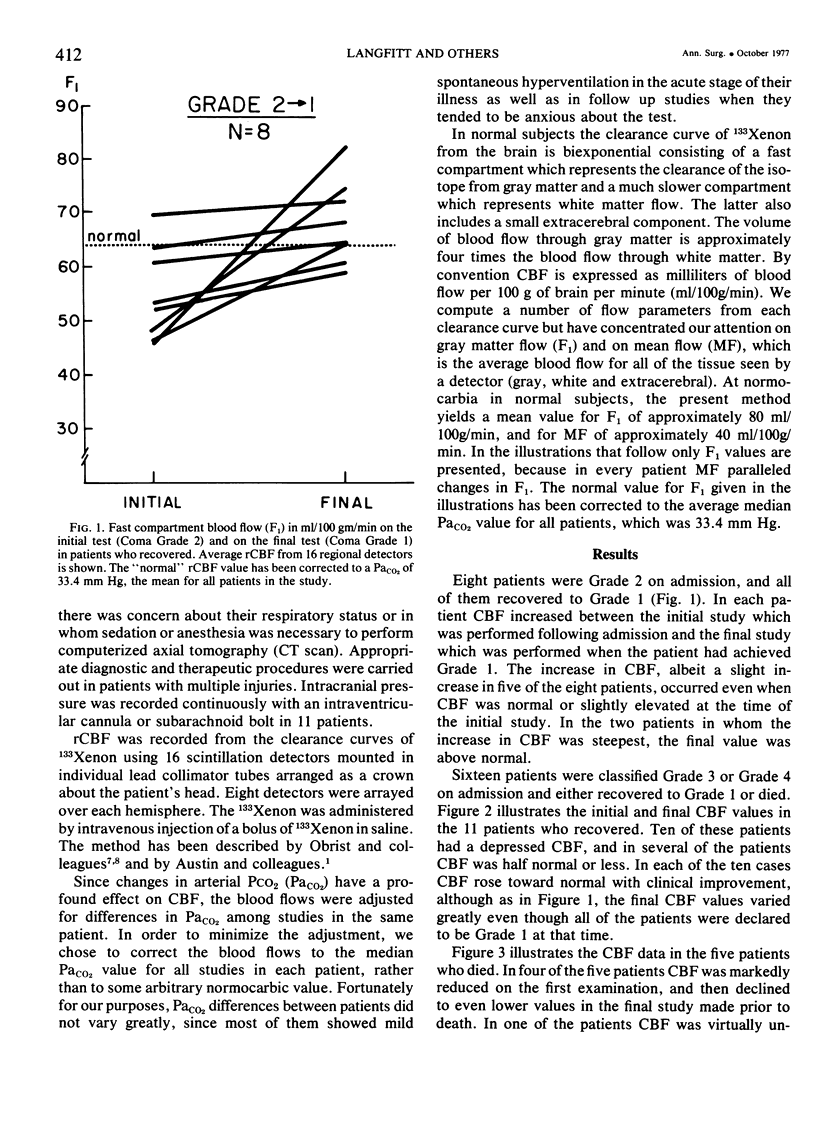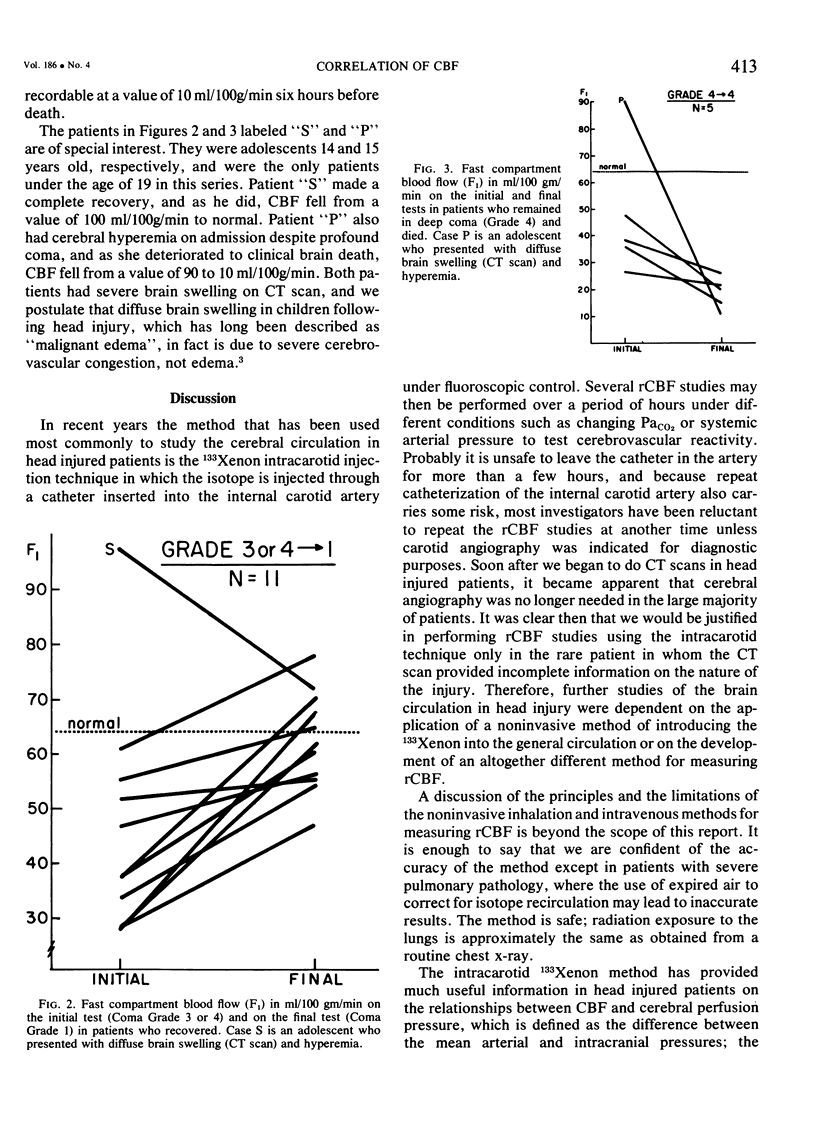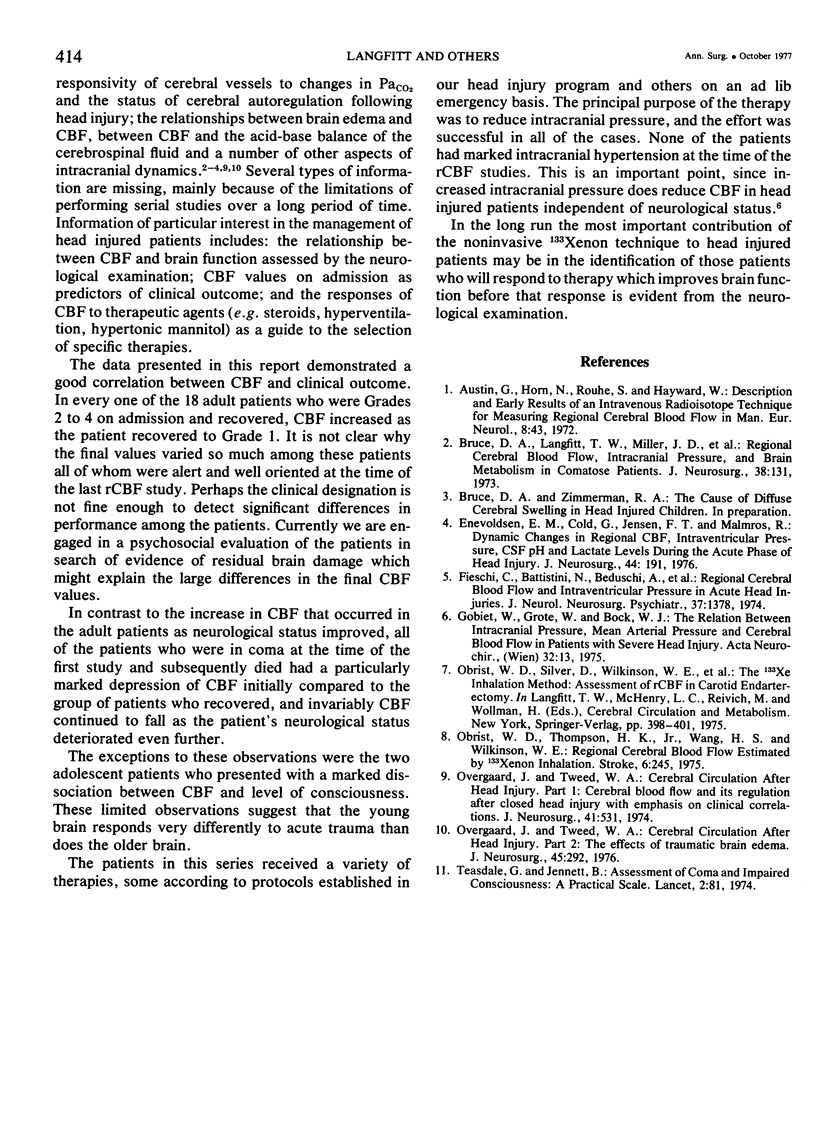Abstract
In order to determine the relationship of cerebral blood flow (CBF) to the clinical outcome of head injury, serial determinations of CBF were performed by the intravenous Xenon technique in 24 patients. The patients were of mixed injury severity and were classified into four groups depending on the neurological exam at the time of each CBF study. All eight patients who were lethargic on admission demonstrated increases in their minimally depressed CBF as they improved to normal status. Eleven patients in deep stupor or coma ultimately recovered. Ten of these patients initially had moderate to profound decreases in CBF which improved as recovery occurred. The single exception was an adolescent whose initial CBF was high but became normal at recovery. Five comatose patients died. In four of these, already depressed CBF fell even lower, while one adolescent with initially increased CBF developed very low CBF preterminally. The data presented in this report demonstrated a good correlation between CBF and clinical outcome. In every one of the adult survivors, depressed CBF increased as the patient recovered to normal status. All adults who died showed a deterioration of CBF as the neurological status worsened. The only exceptions were two adolescents who initially showed high CBF values. In the adolescent who died, CBF dropped to low levels while in the survivor a normal CBF was achieved. Thus in adults a traumatic brain injury was associated with depressed CBF which increased with recovery or decreased further with deterioration while the reaction to injury was quite different in the younger brain.
Full text
PDF



Selected References
These references are in PubMed. This may not be the complete list of references from this article.
- Austin G., Horn N., Rouhe S., Hayward W. Description and early results of an intravenous radioisotope technique for measuring regional cerebral blood flow in man. Eur Neurol. 1972;8(1):43–51. doi: 10.1159/000114549. [DOI] [PubMed] [Google Scholar]
- Bruce D. A., Langfitt T. W., Miller J. D., Schutz H., Vapalahti M. P., Stanek A., Goldberg H. I. Regional cerebral blood flow, intracranial pressure, and brain metabolism in comatose patients. J Neurosurg. 1973 Feb;38(2):131–144. doi: 10.3171/jns.1973.38.2.0131. [DOI] [PubMed] [Google Scholar]
- Enevoldsen E. M., Cold G., Jensen F. T., Malmros R. Dynamic changes in regional CBF, intraventricular pressure, CSF pH and lactate levels during the acute phase of head injury. J Neurosurg. 1976 Feb;44(2):191–214. doi: 10.3171/jns.1976.44.2.0191. [DOI] [PubMed] [Google Scholar]
- Fieschi C., Battistini N., Beduschi A., Boselli L., Rossanda M. Regional cerebral blood flow and intraventricular pressure in acute head injuries. J Neurol Neurosurg Psychiatry. 1974 Dec;37(12):1378–1388. doi: 10.1136/jnnp.37.12.1378. [DOI] [PMC free article] [PubMed] [Google Scholar]
- Obrist W. D., Thompson H. K., Jr, Wang H. S., Wilkinson W. E. Regional cerebral blood flow estimated by 133-xenon inhalation. Stroke. 1975 May-Jun;6(3):245–256. doi: 10.1161/01.str.6.3.245. [DOI] [PubMed] [Google Scholar]
- Overgaard J., Tweed W. A. Cerebral circulation after head injury. 1. Cerebral blood flow and its regulation after closed head injury with emphasis on clinical correlations. J Neurosurg. 1974 Nov;41(5):531–541. doi: 10.3171/jns.1974.41.5.0531. [DOI] [PubMed] [Google Scholar]
- Overgaard J., Tweed W. A. Cerebral circulation after head injury. Part 2: The effects of traumatic brain edema. J Neurosurg. 1976 Sep;45(3):292–300. doi: 10.3171/jns.1976.45.3.0292. [DOI] [PubMed] [Google Scholar]
- Teasdale G., Jennett B. Assessment of coma and impaired consciousness. A practical scale. Lancet. 1974 Jul 13;2(7872):81–84. doi: 10.1016/s0140-6736(74)91639-0. [DOI] [PubMed] [Google Scholar]


